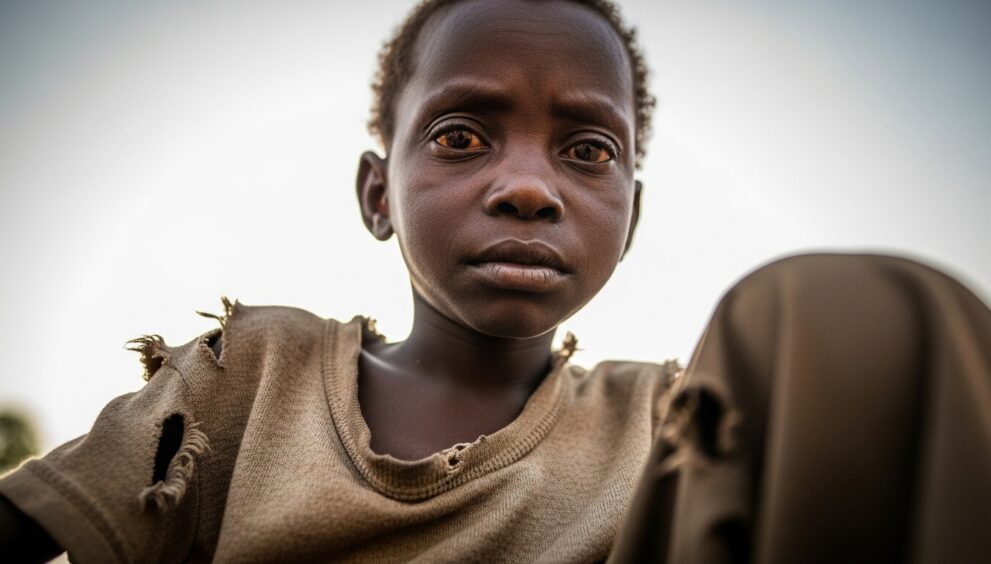On September 18, 2025, Ghana announced a bold new initiative to dramatically expand treatment for children suffering from severe acute malnutrition, a condition that continues to claim the lives of thousands of children each year. The effort, launched in partnership with the Eleanor Crook Foundation (ECF) and the Clinton Health Access Initiative (CHAI), seeks to achieve 90 percent national treatment coverage by embedding the Community-Based Management of Acute Malnutrition (CMAM) approach into the country’s health system. This marks a significant turning point in Ghana’s fight against child malnutrition and signals a shift toward sustainable, government-led solutions.
Undernutrition remains one of the leading causes of child mortality worldwide, and Ghana is no exception. According to the 2022 Ghana Demographic and Health Survey, six percent of children under five suffer from wasting, with 1.2 percent classified as severely wasted. The prevalence is even higher in certain regions, including Northern (7.8 percent), Ashanti (7.7 percent), Volta (7.4 percent), North East (6.8 percent), Central (6.8 percent), and Upper West (6.4 percent). These figures reveal stark geographic disparities in child nutrition outcomes.
Each year, more than 61,600 Ghanaian children suffer from severe wasting, a life-threatening condition characterized by extremely low weight-for-height. Yet fewer than one in six of these children receive treatment. Severe acute malnutrition (SAM) not only increases the risk of death but also leaves children vulnerable to frequent infections, micronutrient deficiencies, delayed development, and long-term health complications. Globally, SAM accounts for over one million child deaths annually.
To address this crisis, Ghana adopted the Community-Based Management of Acute Malnutrition (CMAM) model in 2007, later integrating it into national guidelines in 2015. CMAM relies on Ready-to-Use Therapeutic Foods (RUTF), a nutrient-dense, shelf-stable product recommended by the World Health Organization. RUTF has proven highly effective in treating uncomplicated cases of severe wasting, with recovery rates exceeding 80 percent when programs are adequately resourced.


“ For too long, life-saving treatment for malnourished children has depended on donors and short-term fixes. Now Ghana has pledged to finance and scale wasting treatment through its own health system, and that’s the real game changer. Ghana’s leadership on wasting treatment is a milestone worth celebrating and a powerful signal to other countries that sustainable, government-led solutions are within reach ”
Dr. Yashodhara Rana
However, Ghana’s ability to scale CMAM has been hampered by inconsistent access to RUTF. For years, the country relied heavily on donor-funded procurements, which were often unpredictable and insufficient. This left thousands of children without access to life-saving treatment. The new initiative seeks to change that by embedding RUTF into Ghana’s public health system and ensuring its availability through sustainable financing mechanisms.
The partnership between Ghana Health Services, the Eleanor Crook Foundation, and the Clinton Health Access Initiative represents a $2.15 million investment aimed at transforming the treatment landscape. For the first time, RUTF will be routinely available through Ghana’s public health system. This catalytic investment is designed to bridge the gap between donor dependency and long-term government ownership, creating a pathway toward sustainable, nationally led treatment services.
Between January 2024 and June 2025, the first phase of the partnership laid critical groundwork. National CMAM guidelines and treatment protocols were revised, and RUTF was added to Ghana’s Essential Medicines List and Standard Treatment Guidelines. More than 80 master trainers were trained on updated CMAM protocols, ensuring that health workers across the country are equipped to deliver effective care.
The partnership also procured 13,000 cartons of RUTF, achieving a 30 percent price reduction. This demonstrated that with strategic procurement, Ghana and other countries could potentially purchase over 40 percent more RUTF within the same budget. In addition, anthropometric equipment—including solar-powered weighing scales, length/height boards, and MUAC tapes—was distributed to improve early diagnosis and treatment.

The second phase of the initiative, running from July 2025 to December 2026, aims to embed CMAM into Ghana’s national health systems fully. The goal is ambitious: to achieve 90 percent treatment coverage for children suffering from severe wasting. This phase will focus on three key areas. First, Ghana will implement revised treatment guidelines, expanding care to include high-risk cases of moderate wasting. Second, national and regional procurement systems will be strengthened to ensure a consistent supply and delivery of RUTF. Third, financing mechanisms will be institutionalized, including reimbursement through the National Health Insurance Scheme (NHIS) and integration into regional framework contracts.
By embedding RUTF into the NHIS and the national supply chain, Ghana is taking a decisive step toward sustainability. This approach not only ensures that children receive timely treatment but also reduces the country’s reliance on external donors. Ghana’s initiative aligns with its commitments under the Nutrition for Growth framework and contributes to global efforts to scale access to high-impact, cost-effective malnutrition interventions. The Clinton Health Access Initiative brings its expertise in expanding access to essential health commodities, while the Eleanor Crook Foundation continues its strategy of investing in catalytic, government-led solutions.
The significance of Ghana’s leadership extends beyond its borders. By demonstrating that a low- or middle-income country can integrate wasting treatment into its national health system, Ghana is setting an example for others facing similar challenges. As Dr. Rana noted, this move sends “a powerful signal to other countries” that sustainable solutions are achievable.
The road to achieving 90 percent treatment coverage will not be without challenges. Issues such as supply chain management, health worker training, and equitable access across regions will require sustained attention. Yet the foundation laid during Phase One, combined with the government’s growing commitment to domestic financing, provides a strong basis for success.
If Ghana succeeds, the impact will be profound. Tens of thousands of children who might otherwise face death or lifelong health complications will have the chance to recover and thrive. Moreover, the initiative will strengthen Ghana’s health system more broadly, building resilience against future public health challenges.
In the words of the Eleanor Crook Foundation, Ghana’s decision to take ownership of wasting treatment is “a milestone worth celebrating”. It represents not just a policy shift but a moral commitment to the country’s youngest and most vulnerable citizens. By embedding treatment for severe wasting into its health system, Ghana is making a bold statement: that every child’s life is worth saving, and that sustainable solutions are within reach.



